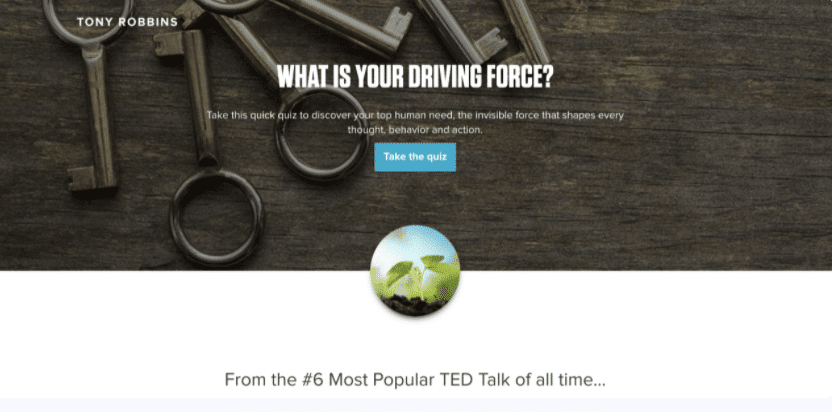From blog posts to ad campaigns to interactive content, there is an overabundance of information available to audiences online.
With so much information circling, it can be hard to get people to actually pay attention and respond to your content.
Effective client communication is a key factor in growing your brand, increasing your leads, and satisfying your customers.
However, it’s not as easy as it once was. Having a strategic plan in place is necessary in order to gain critical communication skills and be able to effectively get in front of your customers.
Rather than focus on tips and tactics, it might be time to drastically rethink your channels of communication.
Interactive communication is a method that fits well into today’s modern world and can help your business become a more effective customer communication brand.
But what exactly is it, and how is it different from other forms of customer communication you might be familiar with?
Let’s take a look and see why it’s effective, what process needs to be put in place to succeed, and examine different cases of interactive communication at work.
- What is Interactive Communication?
- Why is Interactive Communication Effective?
- What is the Interactive Communication Process?
- How Do You Build Interactive Communication into Your Strategies?
- What are Examples of Interactive Communication?
- Wrap Up
What is Interactive Communication?
Interactive communication uses digital tools and technology to help facilitate easy and engaging connections with people, including your customers, prospects and leads.
It is one-on-one conversations with your audiences that use real-time or near real-time information to create a clear dialogue.
Interactive communication is often started by specific triggers in the buyer’s journey and creates a unique brand interaction with your audiences.
That also means that in order to be most effective to a wide range of people, it can largely be standardized.
Other Forms of Communication
There are other forms of communication that can be used in your organization, and that you might already have employed in different functions of your process. Those can include:
Linear Communication
Linear communication is also referred to as one-way communication or push communication.
A sender delivers a message to a receiver without ever expecting a reply. Mass marketing emails, printed brochures, and radio ads are all examples of linear communication.
Pull Communication
Pull communication is all about providing information that a message receiver can access at different times.
While this can be useful, it often leaves out any room for feedback or responses from your audience. Examples might include your website, bulletins, and other forms of content.
It’s important to remember that interactive communication is a process.
It takes time to master, and getting it right in your organization will require a strong strategy. Thankfully, there are many ways to master your interactive communication to make it more effective.
Why is Interactive Communication Effective?
Interactive communication stands out from other forms of communication as the most effective type of communication you can use in your organization.
The biggest factor behind the success of interactive communication is the feedback loop it creates.
Traditional forms of communication don’t allow the receiver of the message to reply back to the sender.
That means that if the message didn’t resonate with audiences or didn’t answer the question that was asked, there is no way for your brand to get that information back.
Additionally, the ability to standardize and template out responses for interactive communication makes it easy for businesses to manage on their own end.
For example, if you know that a common response to a message asked by your chatbot is a request to find the nearest location, you can automate the response to improve the flow of your bot interactions.
Other benefits of an interactive communication strategy include:
- Continuous updates and communication with audiences.
- Transparency with your communication.
- Additional alignment opportunities.
- Quickly being able to understand if a message is received or understood.
- Sharing information with large audiences.
What is the Interactive Communication Process?
Starting the process of adding interactive communication to your current strategies requires a few key steps.
By following this general pattern, you can start to implement an interactive mindset into your brand and grow your areas of communication with customers, prospects, and leads.
Step 1: Examine Your Current Methods of Communication
Before beginning, you first need to understand the current methods of communication you use in your everyday business messages.
If you read the previous types of communication and recognized them, that’s a great place to start.
By completing an audit of your communication channels, you can start to see if you are currently employing any types of interactive communication and notice the patterns in your communication methods.
Are you missing critical feedback in key areas of your business? Where do customers go when they need to talk to you?
Answering these questions can help your audit run smoothly.
Step 2: Make Sure The Information is Simplified
Automating and standardizing the content you use in interactive communication is key.
However, you also want to make sure that the information is easily digestible. Making clean paths of communication and planning out scripts and templates will simplify things.
Step 3: Monitor and Optimize Your Interactive Communication
There is always room for communication improvement.
Monitor the interactive communication channels and see how they work with your brand.
Are you getting any feedback or messages? Do you have the bandwidth to answer questions? And is it possible to make things easier for your team?
Create interactive content and experiences with Ion! Request a free demo now ➜How Do You Build Interactive Communication into Your Strategies?
Building interactive communication into your strategy means employing it in various different areas of your business.
While some formats of interactive communication might lend themselves automatically to back-and-forth dialogue, there are some that you might not currently be using.
Instant and Direct Messages
Instant messaging on platforms like Slack and direct messaging across social media platforms are some of the best ways to use interactive communication.
This allows you to reply in real or near-real time to your audience questions and feedback.
Instant and direct messages also help you share important information quickly with a wide audience.
Face-to-Face or Virtual Meetings
Meetings are a great way to get direct feedback from your customers.
Emails can get ignored, but setting up a meeting can help you avoid the missed messages and unanswered questions.
Whether you meet in person or online, the conversation that takes place in meetings is a great example of interactive communication.
Phone Calls
Phone calls are another example of how to build interactive communication into your strategies.
That means that your customer service is an important part of your interactive communication. By automating responses and having scripts, you can make phone calls even more effective for interactive communication.
Interactive Chatbots
Chatbots are one of the best ways to introduce interactive communication on your website.
These utilize pre-made scripts to guide your web visitors to the pages or information that they are looking for.
By making the scripts as conversational as possible, you can avoid seeming robotic and gather important information on what your customers want and how they interact with your brand.
Live Chat
Live chat works similarly to a chatbot in that it can be added to your website to help facilitate the customer’s journey and experience.
Rather than a bot, however, live chat uses real people on your team to interact and create better lines of communication with your audiences.
Create interactive content and experiences with Ion! Request a free demo now ➜What are Examples of Interactive Communication?
Now that you know what interactive communication is and how it can fit into your current business strategies, let’s take a look at some examples of interactive communication in action.
These will help you see how interactive communication gets the right message in front of the right audiences at the right time.
Tony Robbins Quiz

The Tony Robbins quiz helps audiences find the meaning behind their actions and needs, based on a successful TED Talk.
The quiz allows audiences to not only figure things out for themselves, but gives valuable feedback and information back to the creators, which helps them improve the quiz and the solutions they offer.
BistroMD Quiz

Similarly, the BistroMD quiz helps audiences figure out their digestive health needs and appetite patterns.
The quiz also collects important information that in turn informs the types of medical advice and diet information they focus on.
Telerik Ebook

The Telerik interactive eBook helps people learn more information about the importance of mobile apps.
By asking qualifying questions, the brand is able to collect key information on their audiences and gather feedback on how well the eBbook has helped them grow and gather what information they need.
Wrap Up
It’s clear that in today’s busy business world there is a definite need for more effective communication with customers.
Interactive communication helps create a better experience for your customers and prospects, which ultimately helps you improve your brand reputation, grow your leads, and get return business and revenue.
But it is only one part of embracing an interactive mindset for your brand.
To learn more about how interactivity can help your business grow and stand out from the competition, check out our interactive content guide!
You’ll learn how to add interactive elements to your content strategy, the different formats you can use interactive content in, and get tips on how to implement your own interactive content strategy.
Start creating interactive content with Ion and increase your marketing results!
Start creating interactive content with Ion and increase your marketing results!








